DID YOU KNOW?
Snyder (2004) argues that the Carolina Parakeet may have lasted longer into the twentieth century than previously thought, and that this bird may have been distasteful to predators due to its frequent utilization of the cocklebur – a plant highly toxic to other animals.

Conuropsis

carolinensis
Size:
30 cm (12 in)
Weight:
Females approximately 100 g (3.5 oz); males were larger.
Subspecies including nominate:
two: C. c. carolinensis, C.c. ludovicianus
Colour Adult:
Both adults mainly green/yellow in colour; yellow head; red/orange on lores, forehead and cheeks; yellow/orange carpal edges and thighs. Eye ring bare and white. Eye dark brown. Carolinensis smaller; ludovicianus paler in general.
Colour Juvenile:
As in adults but with mainly green head, with less extensive orange/red on forehead and cheeks; carpal edges and thighs green.
Call:
Calls were described as being loud and raucous while birds in flight; low continuous chatter while a group was feeding.
Content Sources:
BirdLife International
Cornell Lab of Ornithology/Birds of the World
The Carolina Parakeet: Glimpses of a Vanished Bird, Snyder, 2004.
Vanished and Vanishing Parrots, Forshaw, 2017.
Parrots of the World, Forshaw, 2006. 2010 edition
Captive Status:
Not found in captivity. The last known captive bird died in Cincinnati Zoo in 1918.
Longevity:
—
Housing:
—
Diet:
—
Enrichment:
—
Nest Box Size:
—
Clutch Size:
2
Fledging Age:
—
Hatch Weight:
—
Peak Weight:
—
Weaning Weight:
—
World Population:
None
IUCN Red List Status:
Extinct
CITES Listing:
Not Listed
Threat Summary:
The main causes for the demise of this species were seen to include shooting, either by farmers or for sport, capture for the pet trade (mid- to late nineteenth century), some habitat destruction and loss of nesting sites, and disease possibly contracted from farm animals.
Range:
Formerly eastern United States, including the Mississippi Valley, New York state, West Virginia to E Colorado, Tennessee, Kentucky, Louisiana and Florida. May have occurred as far north as S Ontario, Canada, or was possibly traded by indigenous tribes to and from the area.
Habitat:
Was found in regions of well-developed valley bottom forest, especially cypress swamps in the south and sycamore stands in the north. Regular visitors to farmland and other disturbed habitats.
Wild Diet:
Fed on cockleburs, sandspurs, thistles, pine seeds, bald cypress balls, fruits, both cultivated and wild; berries, corn, seeds, wild grapes, nuts, flowers, buds and possibly insects.
Ecology and Behaviour:
Were seen in large, boisterous flocks, flying about foraging by day. Were seen to return to communal roosts in tall trees at dusk. Were acrobatic in their feeding, clambering around tree branches with great agility. Were also tolerant of cold weather.
Clutch and Egg Size:
2 nearly rounded eggs.
Breeding Season:
March-June. Nests were in tree cavities and apparently twig structures.
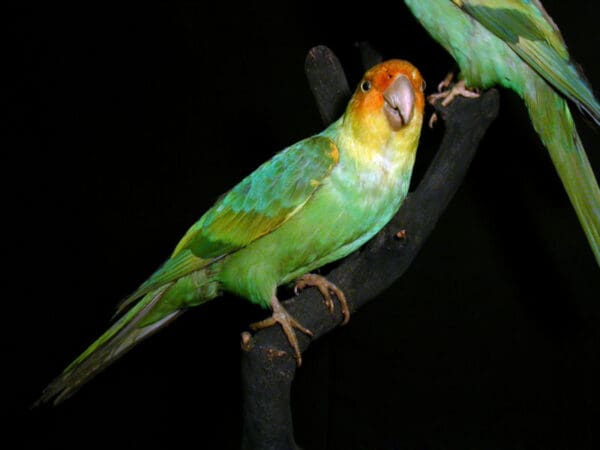
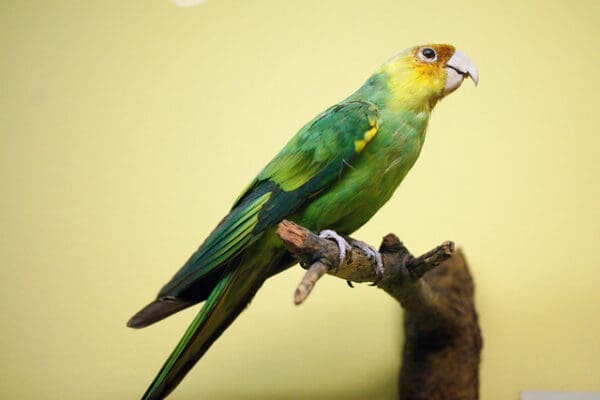
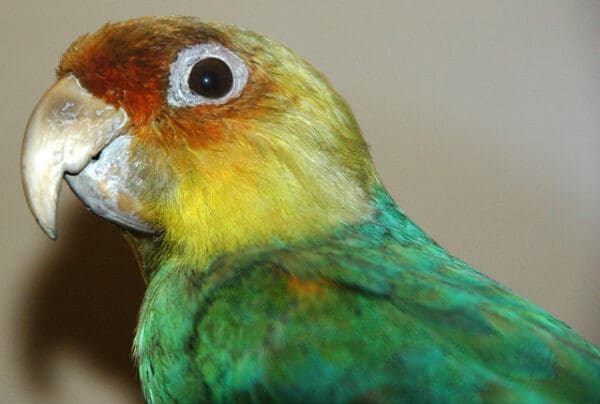
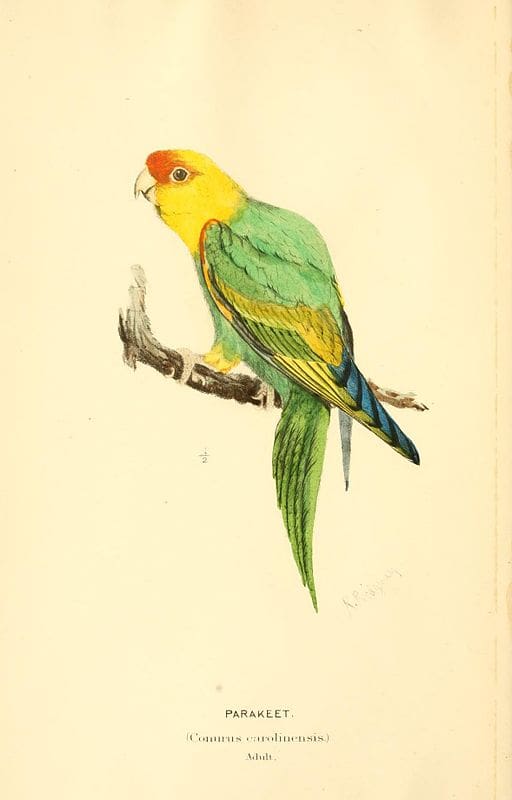
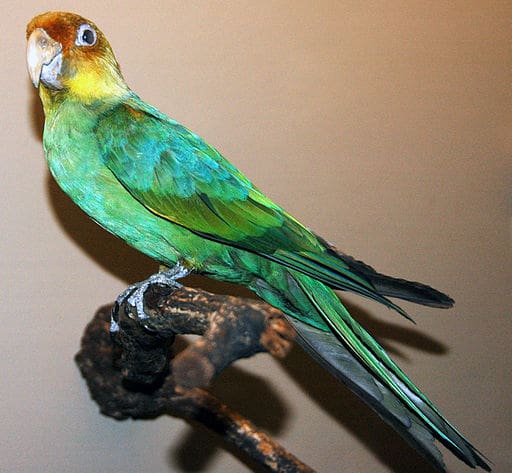
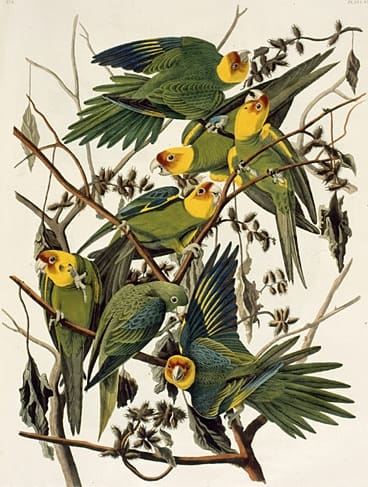
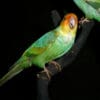
![© opacity [CC BY-SA 2.0] via Flickr A Carolina Parakeet specimen on display in a museum](https://gt2024.parrots.org/wp-content/uploads/2023/01/wpt_Carolina-Parakeet_1433-5-100x100.jpg)
![© James St. John [CC BY-SA 2.0] via Flickr A Carolina Parakeet specimen on display in a museum](https://gt2024.parrots.org/wp-content/uploads/2023/01/wpt_Carolina-Parakeet_1433-4-100x100.jpg)
![© Baird, Spencer Fullerton; Brewer, T. M.; Ridgway, Robert [CC BY 2.0 or Public Domain] via Wikimedia Commons An illustration depicts an extinct Carolina Parakeet](https://gt2024.parrots.org/wp-content/uploads/2023/01/wpt_Carolina-Parakeet_1433-3-100x100.jpg)
![© James St. John [CC BY 2.0] via Wikimedia Commons A Carolina Parakeet specimen on display in a museum](https://gt2024.parrots.org/wp-content/uploads/2023/01/wpt_Carolina-Parakeet_1433-2-100x100.jpg)
![© John James Audubon 1833 [Public Domain] via Wikipedia Commons An illustration depicts a flock of extinct Carolina Parakeets](https://gt2024.parrots.org/wp-content/uploads/2023/01/wpt_Carolina-Parakeet_1433-1-100x100.jpg)